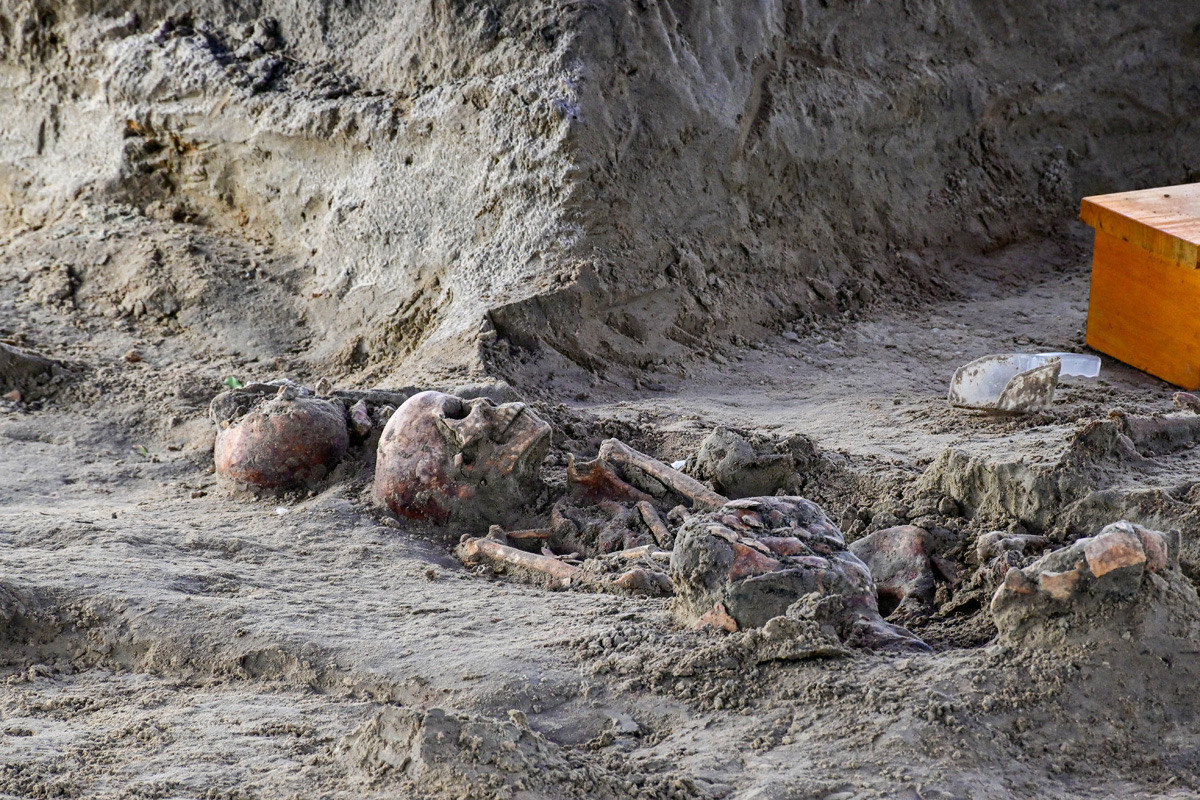News and events
Chemmani Mass Graves: 80 remains identified, including suspected child victims
2025-07-22

Jaffna, July 2025 Excavations at the Chemmani mass graves resumed on 21 July after a temporary halt, uncovering 15 additional skeletal remains over two days. Among the latest discoveries is what is believed to be the remains of a small child, found alongside a feeding bottle and pieces of cloth, further intensifying the outcry over the atrocities linked to these sites.
The findings were made during the second phase of courtsanctioned forensic excavations at Sites No. 01 and No. 02 in Chemmani, Jaffna. With these discoveries, the total number of human remains identified has risen to 80, of which 65 have been fully exhumed over 26 days of excavation. The current phase is part of a 45day excavation plan overseen by judicial authorities.
The suspected child highlights the longstanding concerns of Tamil families and human rights groups that Tamil civilians, including children, were among those abducted, detained, or executed during the Sri Lankan militarys occupation of Jaffna in the 1990s. Items such as the feeding bottle and pieces of cloth provide chilling evidence of the victims identities and have become a symbol of the crimes committed.
Chemmani first came to international attention in 1998, when Sri Lankan soldier Somaratne Rajapakse testified that hundreds of Tamils had been secretly buried during the militarys operations in the peninsula. However, the 1999 investigations were limited in scope, and no one has ever been held accountable for the killings.
Forensic Excavation Sites No. 01 and No. 02, located within the Sindhubaththi Hindu Cemetery, have yielded not only human remains but also personal belongings such as clothing, slippers, bags, and childrens items, all of which have been secured by the Judicial Medical Officer JMO as evidence.
On Monday, officers from the Criminal Investigation Department CID officially took over the excavation from the Jaffna police, following orders from the Inspector General of Police IGP. Reports suggest that the CIDs involvement caused disputes at the site, although details remain unclear. Rights groups have expressed concern that state agencies implicated in past abuses still control the investigation process.
Local civil society organizations and victim advocacy groups have reiterated their calls for international oversight. They emphasize the importance of independent forensic experts to ensure evidence is properly documented and preserved, free from political influence. Many believe that the Chemmani graves, along with other mass grave sites across the North and East, should be examined under a credible international mechanism that can deliver justice to the families of the disappeared.
As excavations continue, survivors and human rights organizations insist that Chemmani is more than just a burial site it serves as a key test of Sri Lankas willingness to confront its legacy of war crimes and impunity.
Contact Details
No: 33
Sagara Road
Bambalapitiya
Sri Lanka
Telephone: (+94) 11 250 6001
Fax: (+94) 11 250 6002



